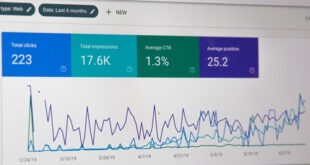Designing a travel blog is an adventure that can tempt us all at one time or another. This article will allow you, I hope, to give you some ideas at the level of the essential steps which it is important to think before starting, then of the actions to be carried out in order to put online and develop your own site.
The main objective of this post is therefore to answer the question:
How to easily create a travel blog? The 10 main steps!
This article obviously also applies to fashion, cooking, decoration, sewing or blog specialized in the field of origami, in short, these tips apply to all sectors. The information given comes from the ideas that go through my head, from my experience, from my way of seeing things, you are then free to form your own opinion.
1. Define your motivations: for what reasons do I want to create a blog?
Starting a website takes time. It is necessary to start with the first phase of reflection and to ask the right questions.
Why do I want to create this blog? What information would I like to communicate? Who will be the target readers? This could be for example your friends and family, parents of students if you are creating a school travel blog, etc. What organization to put in place? How many hours per week can I work on this project? What is my budget? How would I help my readers through my blog? Shall I add hotels for booking? Shall I add the best restaurants list? Will all this make it happen?
All the answers given will allow you to know in which direction you are heading. These first choices are important for getting off to a good start. However, it is possible to decide and adopt later.
2. Choose the name of the blog, define the graphic charter, make a site map
This is a crucial step to define before launching a website, and in my opinion, it is far from the easiest! For the choice of the name of my blog, for example, I remember having worked a few hours, hesitating with several names listed (hardly found) on a piece sheet of paper. The name of the blog can also reflect and highlight the main theme (include the word travel for example in the name), but it can also be an invented word. The ideal is to choose a name that resembles us. Also remember to choose the type of extension you prefer (.com, .fr, or other).
Then, it is important to design the graphic charter, in order to define and offer your site personality and visual identity codes that will be specific to it. You can for example identify what will be the dominant color of the site, the typography used, and design the logo. The design as a whole is not to be neglected because it facilitates reading and also reinforces the image of the site.
Making a sitemap also turns out to be an essential step in the design of the blog. Initially, the idea is to list all the contents of the site, then organize them. You have to define what the menu will contain, what types of pages will be created, and how they will be organized (accessible from the menu or from a link available on the home page for example). It may also be necessary to provide for the presence of a search engine, a possible sidebar, or a footer. Taking care of the tree structure is essential because this will facilitate the navigation of your readers on the site, but also your natural referencing by offering accessible first or second-level pages.
3. Reserve your domain name
You have in mind all the main elements related to the creation of a blog, we are now taking action! Two options are available to you: if you want to create a 100% free blog, that you do not have particularly “great ambition” with it, and that you see no problem in having a site whose address would be for example monsuperblog.wordpress.com, you can go directly to step 4. Personally, I would advise you instead to buy a domain name, because you will have your own website, you will be in full control of its content and you will benefit from better SEO in Google, but that of course depends on your project.
4. Choose your CMS (the software that will help you manage your website and its content)
If you have very good computer skills, you don’t especially need a CMS, in this case, you “just” have to code via Notepad ++ and create the template in order to design the site. It is quite a long time to do. Personally, if you want to create the blog quickly, even without any computer and technical knowledge, I advise you to go through a CMS.
This free tool allows you to manage the content of the site (publish an article in a few clicks), and organize it. The most famous CMS are: WordPress / Prestashop / Joomla / DotClear / Drupal. It is also possible to go through platforms like Blogspot. I advise you to choose WordPress. It is very clear and easy to create a blog with this CMS. And there are many possibilities for customization.
You can now move on to the creation of your blog. If, for example, you want to manage your site via WordPress (free), go to your OVH account, and configure your CMS by selecting “WordPress”. Follow the steps until launching it.
5. Customize the options (theme, design, CSS
Your site is created, however, everything remains to be done. I advise you to start with personalization. Indeed, before starting to publish articles, promote your site, etc., it seems important to highlight the visual identity of your travel blog (or other!), And to make it pleasant to consult. Start by customizing the main theme of your blog. For that, in WordPress, you have to go to the “Appearance” section. Many free formats are interesting. There are also some nice paid themes.
Once the theme is installed, the blog design will start to take shape. It is then possible to customize the site in a general way, for example by changing the typographies and colors. You can also add an image or modify the background color, a header image (the logo). You can also decide to create a sidebar on the left or on the right. These elements can be configured directly in the “Appearance” section.
Still in this section, you can click on “Editor” to access the stylesheet (style.css). It is here that many customizations can be accomplished (size of the characters of the chosen fonts, a distance of the title from the margin, etc…). Inform yourself well before validating changes. If you are not sure of the result of a new setting, save the initial version before making the change, because you could spend a lot of time looking for where the error came from (I speak knowingly )!
6. Customize the homepage of the site, and create the menu
The blog is slowly starting to take shape. For a travel blog or any other website, you have two options for the home page: either create a static page (there will always be the same information on this page, a presentation of your project for example), or a page that automatically displays the latest articles. I chose the second option but both lend themselves well to a blog.
In all cases, it is necessary to create and organize the menu well so that readers can easily find the information or section they are looking for. You can always manage the menu in “Appearances”. You have to create a page or a category, for example, then add it to the menu structure, and finally, sort it in the desired order.
7. Create accounts on social networks and post them on the blog
This is a point not to be overlooked given the importance of social networks for communicating with its readership, developing its notoriety, and forging links in the community.
It seems essential to create an account on Facebook and Twitter. For a travel blog, photos occupy an important place, so it is strongly recommended to highlight them through an Instagram and Pinterest account.
When the accounts are opened on these social networks, consider personalizing them by adding your logo, description, images …
To promote the pages of your social networks, it is useful to highlight them directly on the blog.
8. Download plugins necessary for the development of your activity
With WordPress, there is a very wide choice of extensions, which makes it very easy to set up information or attractive tools on a blog.
I advise you to read articles on the web listing the best or essential WordPress plugins and integrate the most popular. For example, Akismet to fight against comment spam, WordPress SEO by Yoast to optimize published content and make important settings for your natural referencing in Google, Google WML Sitemaps to automatically generate the sitemap containing the URLs that Google must crawl, Google Analytics for WordPress to view blog statistics, Cookie Notice to inform about the presence of cookies on the site (legal obligation), MailPoet for managing newsletters, BackWPup to make backups, or even Contextual Related Posts to automatically suggest at the bottom of each post similar articles.
Integrating an extension forces you to import code and elements that you do not fully master, which is why it is recommended to install only reputable and reliable plugins.
9. Write the first article
It is not an easy step, yet it is important. It is at this moment that one can be confronted with the possible syndrome of the blank page. We do not let ourselves be defeated, we think about the theme we would like to address (the presentation of the blog, the story of a previous trip for example), we prepare the plan and we start writing. We carry out the formatting, we add photos that can ideally be personal or retrieved from the web (“Creative Commons” free images on Flickr for example, taking care to cite the source). We never neglect to proofread. Finally, all that remains is to publish this first article on the web and promote it.
10. Develop your blog
Depending on the main purpose of your website and the goals you set for yourself, the next step is the longest! You must now manage your blog and keep it alive on a daily basis by posting articles quite frequently, ideally at regular intervals.
I advise you to set up all the desired visual elements and to work on the design so that your website is pleasant to see and read for Internet users.
Technical optimization, intended to promote your SEO in Google is a key step if you want to get traffic from search engines. For this, it is important to send the sitemap, to configure your Google Webmaster Tools account, to optimize the content and in particular the title of your pages, the name of the images, etc.
Getting quality links from other websites could help you rank your pages well in Google, and also increase your traffic. You can for example intervene in a forum, by publishing interesting content of which you know the subject, and add a link to an article of your blog which would contain more information on this subject.
Being present on social networks is also important to develop your notoriety with the final goal of acquiring qualified traffic.
Also, sending a weekly or monthly newsletter helps remind your readers that the blog contains new information, and it is useful to encourage them to click so that they visit your travel blog regularly, and to retain them.
Finally, the organization of partnerships (a competition for example), can be the opportunity to temporarily increase the traffic of your site around a particular subject.
A blog generally starts by receiving 1 or 2 visits per day, then ten after a few weeks. You might hit 100 hits a day after a few months, and then who knows, you’ll hit the 1,000 or 10,000 daily hits a few months or years later. You will discover valuable information about your traffic with Google Analytics. Anyway, there is no secret, the traffic is earned and it is the reward of a long work accomplished, and of quality. The main key is patience. The development of activity is generally carried out over time, and it often happens to encounter small annoyances, followed by good surprises. In short, when you have a lot of willpower, and the possibility of moving forward, you never let go!
Julien is the founder of Julius Homes His interest in hiking, skiing, and adventure holidays made him bring together the choicest accommodations around the globe to make holidays relaxing and comfortable.
 CoalesceIdeas Web and graphic design ideas for inspiration
CoalesceIdeas Web and graphic design ideas for inspiration




